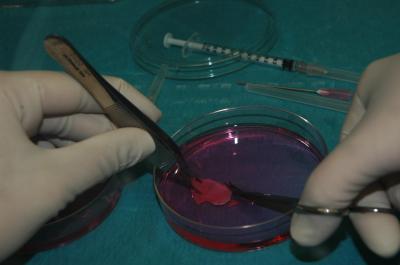
A 27-year-old woman in Belgium is now a mom after giving birth to a baby more than a decade after her ovarian tissue was removed and frozen, according to a new study.
The woman had her ovarian tissue frozen in her early teens, before she underwent a bone marrow transplant to treat her sickle cell anemia. Such transplants involve drugs that can destroy the ovaries.
The method that the researchers used to freeze the ovarian tissue could spare fertility in other girls who must undergo serious medical treatments during childhood, according to the study.
"Children are the patients who are most likely to benefit from the procedure in the future. When they are diagnosed with diseases that require treatment that can destroy ovarian function, freezing ovarian tissue is the only available option for preserving their fertility," Dr. Isabelle Demeestere, a gynecologist at the Erasmus Hospital at the Free University of Brussels, Belgium, and study co-author, said in a statement.
Sickle cell disease
The woman was born in the Congo and was diagnosed at age 5 with sickle cell anemia, a sometimes deadly disease that prevents red blood cells from carrying enough oxygen to the body's tissues. She moved to Belgium when she was 11, and her sickle cell anemia progressively worsened. Soon after her move, it became clear she needed a bone marrow transplant.
However, such transplants require that a patient first undergo chemotherapy to wipe out the immune system and prevent it from attacking the new bone marrow. Chemotherapy also damages DNA, and thus can prevent the person's ovaries or testes from later producing eggs or sperm. Women who want to have children after chemotherapy can have their eggs extracted and frozen prior to treatment, but prepubertal girls do not yet have mature eggs that can be extracted.
Get the world’s most fascinating discoveries delivered straight to your inbox.
Fertility-sparing operation
In this patient's case, doctors hoped to spare her fertility by removing her right ovary before she began her chemotherapy. They performed the procedure when she was about 13 — before she had begun menstruating, but after her breasts had developed (a sign that puberty was underway).
The bone marrow transplant was ultimately successful in treating the woman's sickle cell anemia, but her left ovary failed when she was 15. Afterward, she began taking hormone replacement therapy to initiate menstrual cycles.
Ten years later, the woman wanted to have a child. Doctors thawed some of her ovarian tissue, grafted four pieces onto what remained of her left ovary and 11 other pieces into her abdomen. She also stopped taking the hormone replacement therapy.
Healthy baby boy
Eventually, her transplanted ovarian tissue responded to the natural hormones circulating in her body, and developed follicles, which hold mature eggs. Two years after the transplant, she conceived a baby naturally, and gave birth to a healthy boy in November 2014.
The woman's case suggests that it is possible to preserve fertility in girls who have not yet reached puberty and must undergo treatments such as chemotherapy or radiation. [16 Most Unusual Medical Cases]
However, it’s not clear whether the same technique would be successful in younger children, as the girl had already started puberty when the operation was done, the researchers noted in the article, which was published today (June 9) in the journal Human Reproduction.
The ovarian tissue seems to be working normally, and it's possible that the woman could have another child using the same tissue, Demeestere said.
But even if the grafted ovarian tissue stops working, the woman is not out of options, the researchers said.
"She also has the possibility of undergoing a second transplantation with the remaining frozen tissue if the graft stops working, as we didn't transplant all the ovarian tissue the first time. We have another patient who became pregnant after ovarian transplantation, and she had two babies born after two graft procedures," Demeestere said.
Follow Tia Ghose on Twitter and Google+. Follow Live Science @livescience, Facebook & Google+. Original article on Live Science.

Tia is the editor-in-chief (premium) and was formerly managing editor and senior writer for Live Science. Her work has appeared in Scientific American, Wired.com, Science News and other outlets. She holds a master's degree in bioengineering from the University of Washington, a graduate certificate in science writing from UC Santa Cruz and a bachelor's degree in mechanical engineering from the University of Texas at Austin. Tia was part of a team at the Milwaukee Journal Sentinel that published the Empty Cradles series on preterm births, which won multiple awards, including the 2012 Casey Medal for Meritorious Journalism.


